Arthritis In Fingers: 5 Effective Ways To Find Relief
Recognize the signs early to address the problem on time with simple exercises.

Image: Shutterstock
It is no fun if your fingers hurt since the role of your fingers in daily activities is really important. With age and certain lifestyle choices, arthritis may creep in, causing issues with mobility and achy joints. If you have been experiencing pain in your hands and fingers, you may want to check if you have arthritis in the fingers or your hand, as early intervention ensures timely treatment and better management of the condition. You can identify it with the help of common symptoms or visit a medical professional if you are unsure. There are also certain practices you can do at home that may help you manage finger arthritis. We talk about all that and more here, so read on.
In This Article
What Is Arthritis In Fingers?
Arthritis in the fingers is a condition where the joints in your fingers are affected and become swollen and painful. Arthritis in itself can affect any part of your body with joints and cartilages. It may do so by breaking down the smooth lining at the end of the bones known as the cartilage or the tissues of joints or by causing inflammation. This leads to the bones becoming exposed, rubbing against each other, and wearing away (1). Since your hand has many joints, it can be prone to arthritis, and arthritis in the hands can progress to finger arthritis.
There are a few types of arthritis that can affect the hands and fingers, like:
- Osteoarthritis
Osteoarthritis (or degenerative arthritis) affects the wrist, the joint located at the base of the thumb, and the middle and top joints in the fingers. With osteoarthritis, you experience wear and tear of the cartilage which eventually leads the bones to rub against each other and get damaged. This progressive wearing down of the cartilage and bones may cause stiffness, deformities, and pain (2).
- Rheumatoid Arthritis
Rheumatoid arthritis is an auto-immune disease in which the body’s natural immune system begins to attack its own healthy tissues, leading to inflammation in the lining of the joints.
This causes a breakdown in the cartilage and eventually leads to the bones getting eroded. This chronic condition affects the small joints in the wrists, hands, and fingers symmetrically (the same joints in both hands get affected) (3).

 Did You Know?
Did You Know?- Psoriatic Arthritis
Psoriatic arthritis is similar to rheumatoid arthritis and causes swelling of fingers. It also affects the skin and is commonly associated with morning stiffness and joint ache (4).
- Gout
Gout is characterized by the formation of crystals within the joints due to accumulation of excess uric acid in the body.
This condition generally affects the big toe, but it may also affect the finger joints and cause stiffness of fingers (5).
- Post-Traumatic Arthritis
Post-traumatic arthritis is a condition that develops in a joint as a result of previous machine- and sports-related injuries, such as fractures, dislocations, and severe sprains. When the damaged structure repairs after injury, it may lead to stiffness or scarring. Over time, this can progress to arthritis, causing further joint degeneration. Fingers are the most affected part of a hand injury, occurring in up to 38.4% of cases (6).
- Basal Thumb Arthritis
Basal thumb arthritis affects the joint at the base of your thumb. It happens when the protective cartilage wears down. This can make simple tasks such as gripping and pinching difficult as you feel stinging pain at the base of your thumb. One study states that it increases with age and mostly affects postmenopausal women (7).
According to a CDC report, 58.5 million U.S. adults (23.7%) above 18 were estimated to have arthritis in the year 2016-18. Arthritis prevalence among adults aged 65 and above was 50.4%, adults unable to work or disabled was 52.3%, and adults with fair/poor self-rated health were 51.2%.
You may experience the symptoms associated with arthritis in the base of your thumb, your knuckles, and the middle and top joints of your fingers. Let’s look at some of the symptoms that can help you identify finger arthritis.
Key Takeaways
- Arthritis can lead to the commonly known pain in the knees and affect the joints in your fingers.
- Osteoarthritis, rheumatoid arthritis, psoriatic arthritis, or gout, depending on the kind and cause, different parts and structures of the fingers can get affected.
- Proper diagnosis, diet changes, regular exercise, heat and cold treatment, massage, and medicines can help you get some relief from the pain and stiffness associated with finger arthritis.
Common Symptoms Of Finger Arthritis
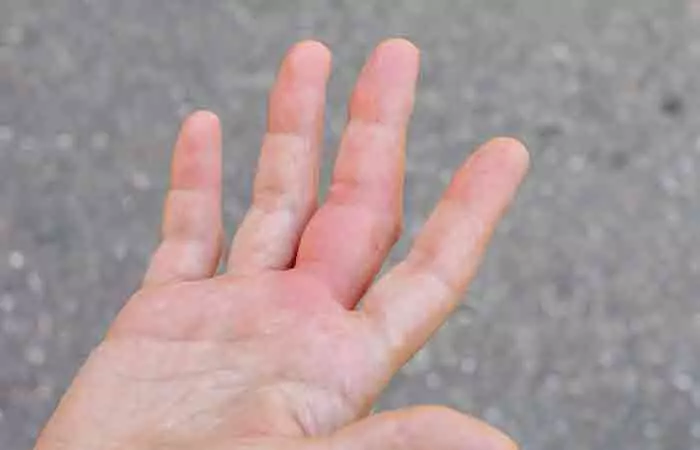
Depending on the type of arthritis, you may experience one or more of these symptoms. The following are commonly associated symptoms with arthritis in fingers:
- Pain in the joints that ranges from dull to sharp
- Swelling in fingers or the joints
- Stiffness, which is particularly common in the morning
- Difficult to fully extend or flex the fingers
- Lumps or nodules around finger knuckles
- Crooked fingers that bend away from the thumb
All these are indicative of the underlying cause for the achy and stiff fingers. Let’s see what that is in the next section.
What Causes Finger Arthritis?

Arthritis in fingers develops when the cartilage that cushions the bones located at finger joints gets damaged. The joints are where two bones meet, and due to the damage to the cartilage, the smooth movement between the bones at those points gets affected.
While there is not one single cause that is responsible for the development of arthritis, you are more at risk of getting it if you are (8):
- Above 35 years old
- A woman
- Overweight
- Genetically prone
- Carrying any previous injury to your hand, wrist, or fingers
These symptoms suggest that the risk of arthritis in fingers increases with age, weight gain, and joint trauma. Some genetic factors, such as mutations in genes responsible for producing types II, IV, V, and VI collagens may also result in arthritis (1). So, individuals with a family history of arthritis or specific genetic predispositions may be at a higher risk.
Arthritis in fingers can creep up on anyone, so it is best to know how to get rid of it as quickly as possible. Head on to the next section to find out how.
How To Get Rid Of Arthritis In Fingers
1. Exercise Your Hands And Fingers

You can strengthen the muscles that support the joints of your hands with a few simple exercises. The increased blood flow and the influx of nutrients can help your cartilage stay healthy and prevent further breakdown. Additionally, the stronger the muscles, the more weight they can carry. This further protects the damaged bones and cartilage (9).
The following hand exercises may help you with arthritis pain in your fingers:
- Make a gentle fist by slowly bending your four fingers into a fist, with your thumb remaining outwards. Gently squeeze and straighten your fingers.
- Bend each of the four fingers one by one. To do that, first, hold out your hand with the palm facing upwards. Next, take one finger and slowly move it to the center of your palm. Hold it there as you bend the remaining three fingers to touch the center of the palm. Release and straighten your hand.
- Gently and slowly bend your thumb to touch the palm. It is okay if you are unable to touch it. Just go as far as you can, hold for a few seconds and repeat.
- Try to form a C-shape or an O-shape with your fingers. To do that, move your fingers to grab an imaginary little ball. Go as close to the shapes as possible, straighten your fingers and start again.
- Make a loose fist with your fingers, with the little finger (pinky) resting on a flat surface. Then raise your thumb upwards in a thumbs-up sign. Bring it down and repeat.
- Lay your hand palm downwards on a flat surface. Then, lift and put down each finger one after the other. Do this for both hands.
- Squeeze a rubber ball gently and release. Repeat five times for each hand.
- Hold out your hand so that your palm is facing away from your face. Try to spread the fingers as wide as you can. Relax and return to the original position. Repeat thrice.
2. Use Ice And Heat Treatment

Both heat and cold can help bring relief from joint stiffness and arthritis fingers. While heat therapy may relieve stiffness, cold therapy can numb the hands and reduce joint pain and swelling (10), (11). Use cold therapy for not more than 20 minutes at a time and remove the ice pack as soon as your skin feels numb. A lot of people alternate between hot and cold treatment and you can do the same depending on what brings you the most relief.
For heat therapy:
- Take a warm shower.
- Soak your hands in a bowl of warm water.
- Use a heating pad or apply a warm compress on your fingers.
- Use a paraffin wax wrap. To do this, warm the wax and cover the fingers or your entire hand with the wax. Take care not to pour wax while it is extremely hot.
For cold therapy:
- Wrap a thin towel around a bag of frozen vegetables and apply it to your achy fingers.
- Freeze a towel and wrap it around your fingers.
- Massage your fingers with a frozen bottle of water wrapped in a thin towel.
- Make an ice pack at home using a sock filled with uncooked rice grains. Keep it in the freezer and use it as and when required.
Note:
Sometimes, a jammed finger can be mistaken for finger arthritis. However, a jammed finger does allow some range of motion while arthritis can make it extremely hard to move your fingers. Cold therapy is also a soothing natural treatment for jammed fingers that numbs the pain and alleviates swelling.
3. Take Supplements
Inflammation is often responsible for the pain and discomfort in finger arthritis. Research shows that EPA and DHA, which are omega-3 polyunsaturated fatty acids may help with reducing inflammation (12). According to a study, ginger supplements may also be helpful in reducing symptoms of rheumatoid arthritis (13). Talk to your doctor about the dosage for any supplements that you may want to take.
 Did You Know?
Did You Know?4. Massage Your Fingers

Research shows that massage therapy for hand arthritis may help in mobility and reduce pain (14). Use any unrefined oil like unprocessed coconut oil and work on the muscles in your hands and the finger joints. Use the thumb, index, and middle fingers of your massaging hand and gently rub your joints and muscles in a rotating motion. While self-massaging is something you can do at home, visit a massage therapist for proper hand therapy and to get the technique perfected.
5. Alternative Therapies
Alongside conventional treatments, several alternative therapies may also help manage arthritis symptoms. These include:
- Acupuncture: It involves inserting thin needles into specific points on the body to help reduce pain and inflammation. Research suggests acupuncture may be effective for easing arthritis pain and improving mobility (15).
- Chiropractic Care: This includes adjustments that aim to align the spine and joints to improve their function and reduce pain. Research suggests many people with arthritis may find pain relief through chiropractic treatments (16).
- Herbal Remedies: Some herbs like turmeric and ginger are also believed to have anti-inflammatory properties that may help manage arthritis symptoms (17). However, more research is needed in this regard.
While home remedies may help alleviate some of the pain associated with arthritis, it is important to know when to visit your doctor.
Dominic Kent, an author, shared his experience with rheumatoid arthritis and how he found relief with some simple tips. He stated that, “There are just a few additional steps I must take, in order to try to combat the numbing pain in my fingers. Wash my hands under the hot tap for a few minutes. Moisturise hands (the process of rubbing fingers together is more important here than actually moisturising them) (i).”
When To See A Doctor
Talk to your doctor when you have symptoms of arthritis to get a proper diagnosis as that can determine the best treatment options for you. Generally, the diagnosis includes a physical examination to check swelling, tenderness, redness, or warmth near joints. The doctor may also suggest imaging tests like MRI and ultrasound. It is best to get arthritis checked and treated early as it may lead to extreme pain, complete loss of movement, or deformities in your hands and fingers if allowed to progress unchecked.
Arthritis may not be curable, but there may be a few things you can do to prevent it or at least lower your risk of getting it.
How To Prevent Arthritis In Fingers
As you may be predisposed to arthritis in fingers, following these can reduce your chances of developing the condition:
- Regular hand and finger exercises
- Taking good care of hands and fingers after they sustain any kind of injury
- Quitting cigarettes (18)
- Avoiding repetitive moments like knitting that can put excess stress on your finger joints
- Maintaining a healthy weight to reduce overall joint strain (19)
- Eating an anti-inflammatory diet rich in antioxidants and omega-3 fatty acids to reduce swelling and support joint health (20)
- Ensuring proper hydration to keep joints lubricated (21)
Infographic: 5 Finger Arthritis Symptoms & 3 Tips for Mobility
Regular hand exercises, maintaining a healthy weight size, and protecting the joints can help manage and slow down finger arthritis. You may need medication, physical therapy, or surgery for severe cases. Check the infographic below for the top 5 symptoms of finger arthritis and 3 prevention tips to restore mobility.
Some thing wrong with infographic shortcode. please verify shortcode syntaxArthritis in fingers may be a result of osteoarthritis, rheumatoid arthritis, gout, or psoriatic arthritis. Some people are more prone to arthritis than others as lifestyle, previous injuries, and genetics play a role in the development of the condition. While arthritis cannot be reversed completely, early treatment may slow down its progress. You can manage the symptoms of arthritis with regular exercise, supplementation, and hot or cold massage. It is important that you work with your healthcare professional throughout to get the most out of your arthritis treatment and management options.
Frequently Asked Questions
What vitamin helps arthritis in fingers?
Vitamins C, D, E, and K may help alleviate pain, joint inflammation, and oxidative stress in people with arthritis (22), (23), (24), (25). Therefore do include these vitamins in your arthritis diet.
Why is arthritis in fingers pain worse at night?
While the exact cause behind this is unknown, it may possibly be linked to changes in the circadian rhythm (26).
Is apple cider vinegar good for arthritis?
There is currently no evidence that suggests that apple cider vinegar may help manage arthritis.
Is yogurt good for arthritis?
Yes, yogurt has anti-inflammatory and antioxidant properties that may help manage arthritis (27).
How should I sleep with arthritis in my hands?
You should ideally sleep straight on your back or lie on the unaffected side of your body. Avoid sleeping on your stomach
Learn all about arthritis in the fingers from this video! Get the facts on symptoms, causes, treatments, and more by watching the video below.
Personal Experience: Source
StyleCraze's articles are interwoven with authentic personal narratives that provide depth and resonance to our content. Below are the sources of the personal accounts referenced in this article.
i The Pain And Relief Of Being AWriter With Rheumatoid Arthritishttps://dominickent.medium.com/writer-rheumatoid-arthritis-b90e982885f1
References
Articles on StyleCraze are backed by verified information from peer-reviewed and academic research papers, reputed organizations, research institutions, and medical associations to ensure accuracy and relevance. Read our editorial policy to learn more.
- Arthritis
https://www.ncbi.nlm.nih.gov/books/NBK518992/ - An overview and management of osteoporosis
https://www.ncbi.nlm.nih.gov/pmc/articles/PMC5335887/ - Rheumatoid Arthritis: A Brief Overview of the Treatment
https://www.ncbi.nlm.nih.gov/pmc/articles/PMC6422329/ - Psoriatic arthritis
https://www.ncbi.nlm.nih.gov/pmc/articles/PMC3596149/ - Gout: An old disease in new perspective – A review
https://www.ncbi.nlm.nih.gov/pmc/articles/PMC5512152/ - Posttraumatic hand stiffness
https://www.ncbi.nlm.nih.gov/books/NBK565851/ - Basal thumb arthritis
https://www.ncbi.nlm.nih.gov/pmc/articles/PMC2599975/ - Arthritis Risk Factors
https://www.cdc.gov/arthritis/risk-factors/?CDC_AAref_Val=https://www.cdc.gov/arthritis/basics/risk-factors.htm - Effect of home-based hand exercises in women with hand osteoarthritis: a randomised controlled trial
https://ard.bmj.com/content/74/8/1501 - Treating arthritis with locally applied heat or cold
https://pubmed.ncbi.nlm.nih.gov/7839157/ - The influence of heat and cold on the pain threshold in rheumatoid arthritis
https://pubmed.ncbi.nlm.nih.gov/8259720/ - The Effect of Omega-3 Fatty Acids in Patients With Active Rheumatoid Arthritis Receiving DMARDs Therapy: Double-Blind Randomized Controlled Trial
https://www.ccsenet.org/journal/index.php/gjhs/article/view/52769 - Zingiber officinale: A Potential Plant against Rheumatoid Arthritis
https://www.hindawi.com/journals/arthritis/2014/159089/ - Hand arthritis pain is reduced by massage therapy
https://www.researchgate.net/publication/239602148_Hand_arthritis_pain_is_reduced_by_massage_therapy - Clinical Efficacy of Acupuncture for the Treatment of Rheumatoid Arthritis: Meta-Analysis of Randomized Clinical Trials
https://pmc.ncbi.nlm.nih.gov/articles/PMC9078778/ - Utilization of chiropractic services in patients with osteoarthritis and spine pain at a publicly funded healthcare facility in Canada: A retrospective study
https://pubmed.ncbi.nlm.nih.gov/35253731/ - Synergistic Anti-Inflammatory Activity of Ginger and Turmeric Extracts in Inhibiting Lipopolysaccharide and Interferon-γ-Induced Proinflammatory Mediators
https://pmc.ncbi.nlm.nih.gov/articles/PMC9229778/ - Smoking and Rheumatoid Arthritis
https://www.ncbi.nlm.nih.gov/labs/pmc/articles/PMC4284707/ - Weight Loss and Obesity in the Treatment and Prevention of Osteoarthritis
https://pmc.ncbi.nlm.nih.gov/articles/PMC3623013/ - Health effects of a low-inflammatory diet in adults with arthritis: a systematic review and meta-analysis
https://pmc.ncbi.nlm.nih.gov/articles/PMC7503186/ - Consumption of water containing a high concentration of molecular hydrogen reduces oxidative stress and disease activity in patients with rheumatoid arthritis: an open-label pilot study
https://pmc.ncbi.nlm.nih.gov/articles/PMC3563451/ - Vitamin C May Help to Reduce the Knee’s Arthritic Symptoms. Outcomes Assessment of Nutriceutical Therapy
https://www.ejmanager.com/mnstemps/10/10-1559910954.pdf?t=1655795876 - Vitamin D and Osteoarthritis Pain
https://www.researchgate.net/publication/340678762_Vitamin_D_and_Osteoarthritis_Pain - The Role of Vitamin E in Preventing and Treating Osteoarthritis – A Review of the Current Evidence
https://www.frontiersin.org/journals/pharmacology/articles/10.3389/fphar.2018.00946/full - The Relationship between Vitamin K and Osteoarthritis: A Review of Current Evidence
https://www.mdpi.com/2072-6643/12/5/1208 - Day and night pain management in rheumatoid arthritis
https://www.researchgate.net/publication/13488045_Day_and_night_pain_management_in_rheumatoid_arthritis - Managing Rheumatoid Arthritis with Dietary Interventions
https://www.ncbi.nlm.nih.gov/pmc/articles/PMC5682732/
Read full bio of Nilofar Pendhari
Read full bio of Sanchari Bhattacharya
Read full bio of Arshiya Syeda
Read full bio of Himanshi Mahajan






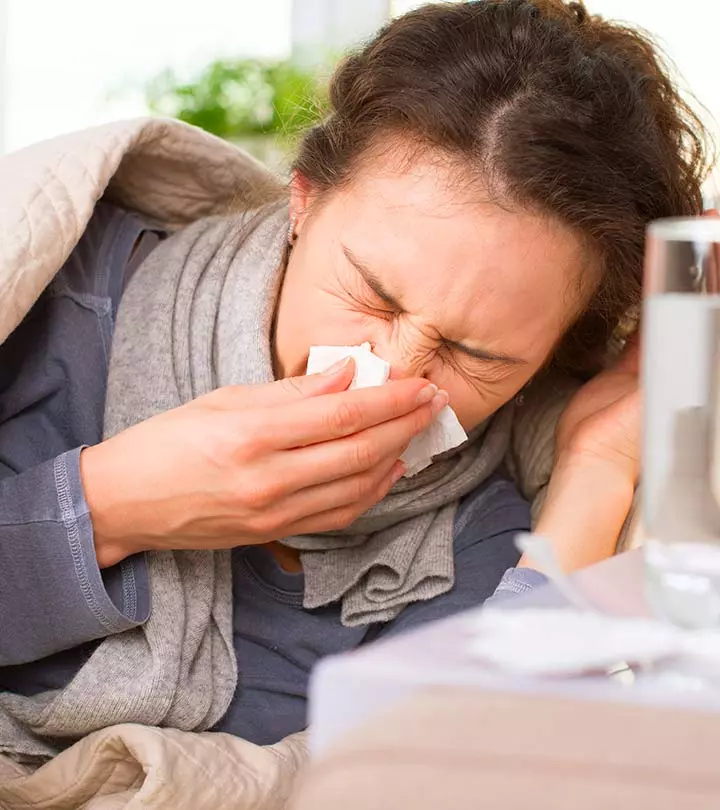
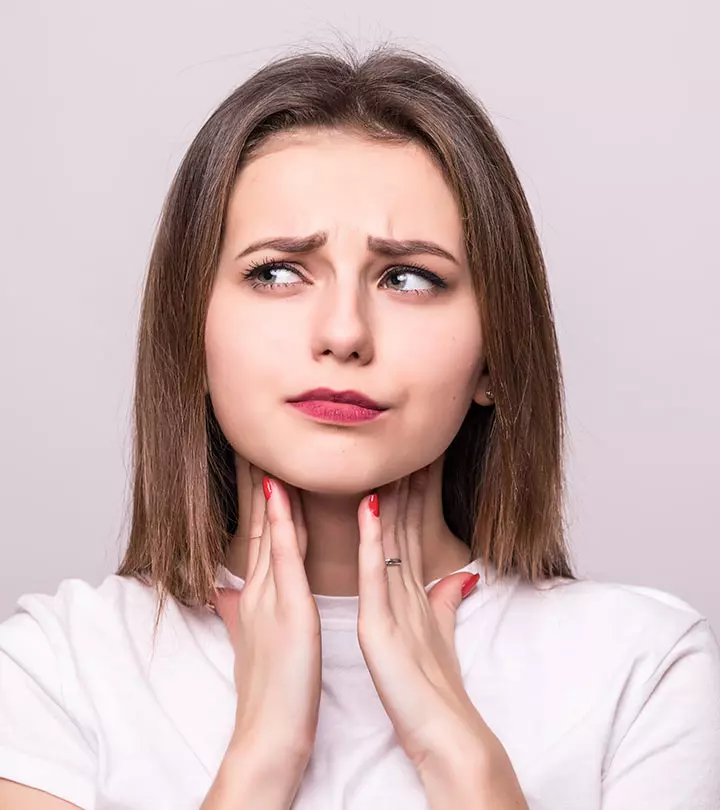
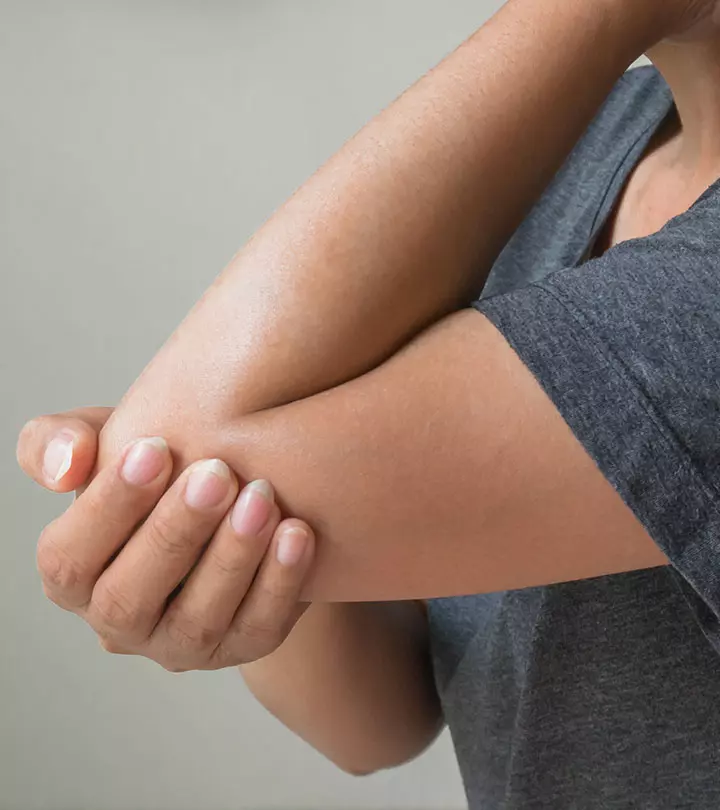
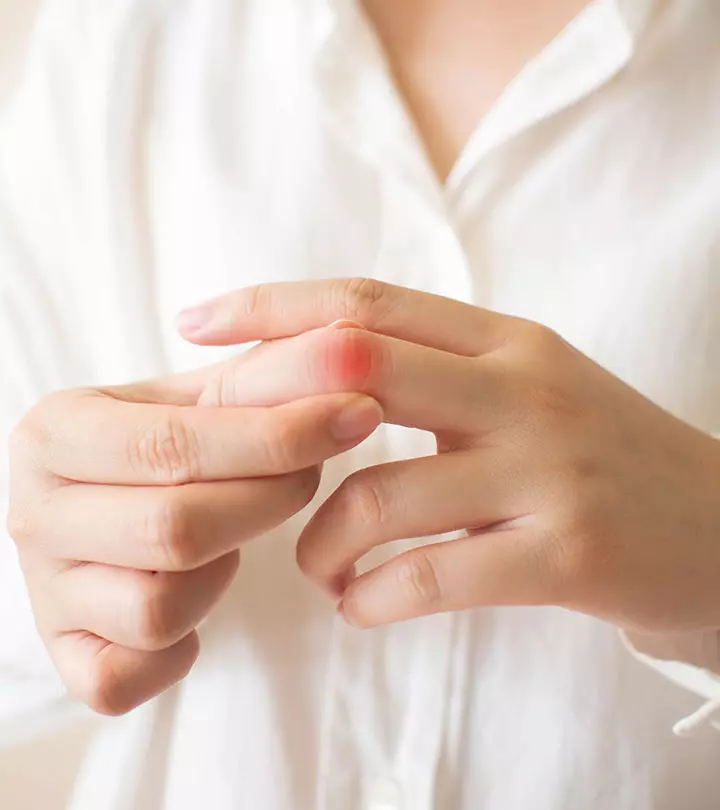




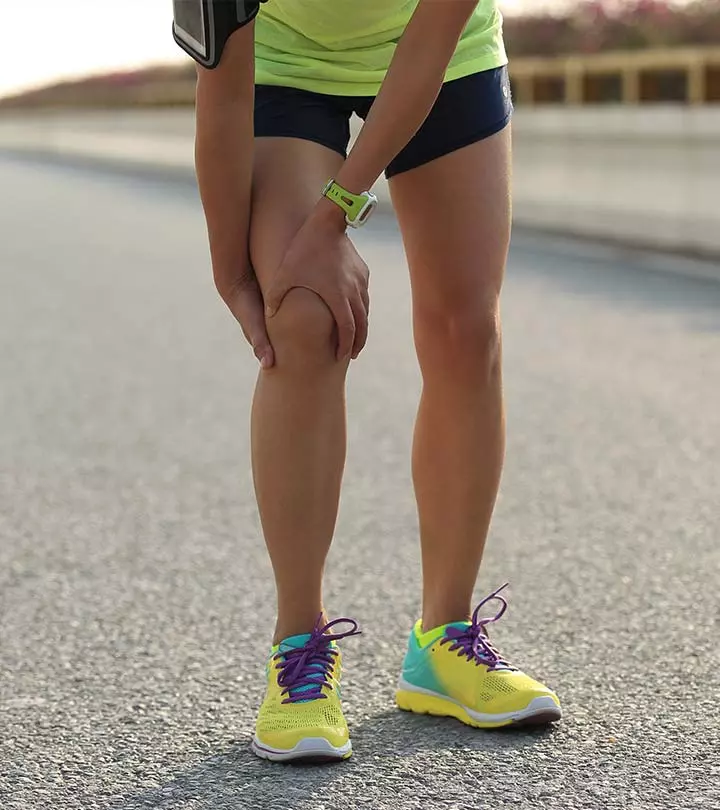
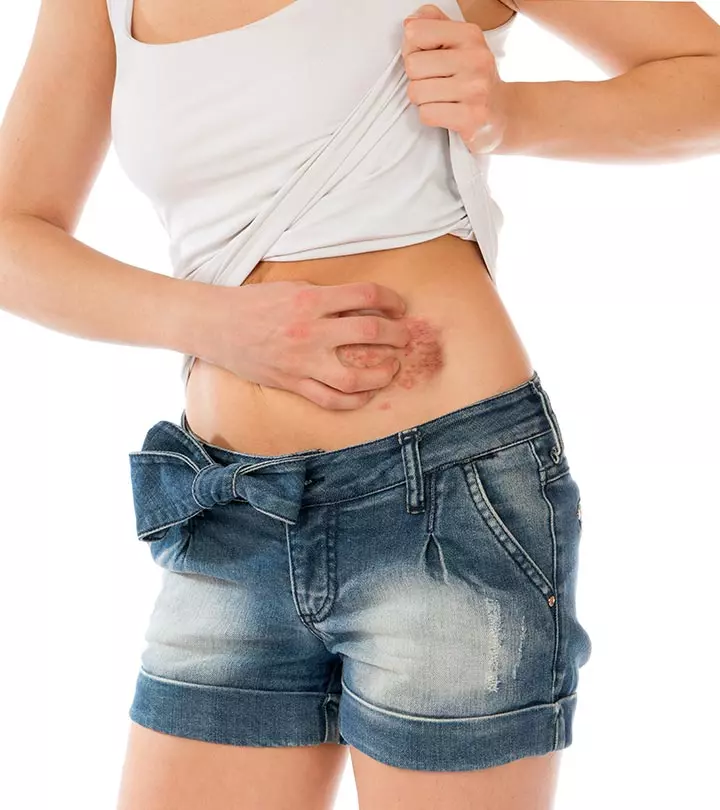
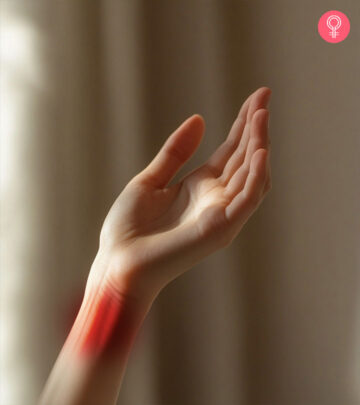


Community Experiences
Join the conversation and become a part of our empowering community! Share your stories, experiences, and insights to connect with other beauty, lifestyle, and health enthusiasts.